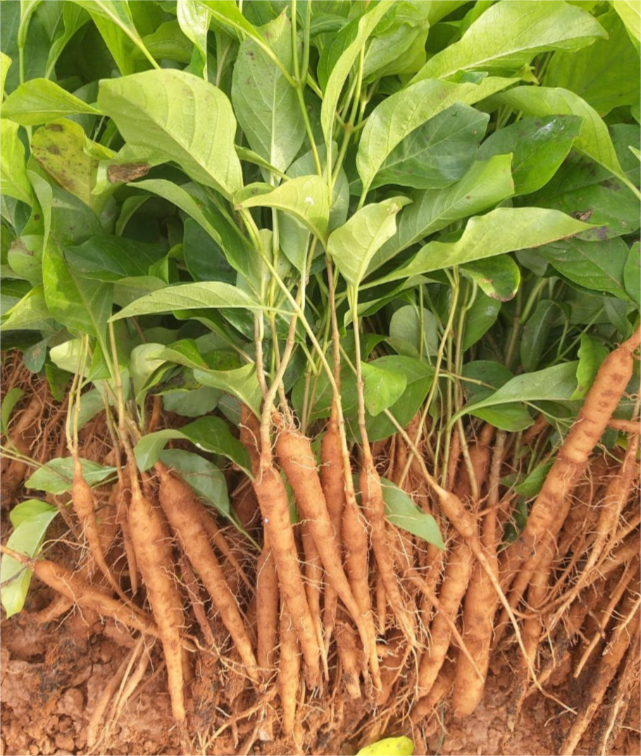Sugandhapala Plant
A medicinal vine highly valued in Ayurveda for its cooling and detoxifying properties. Thrives in partial shade with moderate moisture. Its roots are often used to prepare herbal tonics and syrups. |

Habit
Vine
Height
1-3 m
Growth
Moderate
Soil
Well-drained, loamy
Shade
Partial sun
Moisture
Moderate
Edible
No
Medicinal
Yes
Origin
India, Southeast Asia
Climatic Condition
Tropical, Subtropical
Temperature (°)
20-30°C
Humidity (%)
60-80%
Potting media
Loamy, peat
Fertilizers
Organic, balanced NPK
Watering
Regular
Plant Weight
200-500 g
Flowering Time
Summer, Fall
Soil Ph level
6.0 - 7.5
Water Ph level
6.0 - 7.0
Soil EC
1-2 dS/m
Yield Per Plant
Medicinal herb
NPK ratio
10:10:10
life Span
Perennial
Health Benefits
Medicinal, detoxifying, anti-inflammatory
Suggested Grow Media or Potting Mix ?
| 40% peat moss, 30% perlite, 30% compost |
Suggested Fertigation/Fertilizers
| Fertilize quarterly with organic fertilizer. |
Common Diseases and Remedies
Root rot, Powdery mildew, Leaf spot, Aphids.
Yellowing, black or brown spots on leaves, powdery coating, wilting
Copper fungicides, insecticidal soap, horticultural oil
HEALTH BENEFITS
- Skin Care: Sugandha Pala may help improve skin tone and address skin conditions.
- Weight Loss: It can potentially aid in weight loss by promoting a healthy metabolism and helping flush out toxins.
- Diabetes: Some studies suggest it may be beneficial for managing blood sugar levels.
- Immune System: It's believed to enhance the body's ability to fight off infections and diseases.
- Digestion: Sugandha Pala may improve digestive health by promoting healthy urination and reducing constipation.
- Inflammation: It may help reduce inflammation throughout the body.
- Heart Health: Some research suggests it may support heart health.
- Blood Purification: It's considered a blood cleanser, helping to remove impurities and toxins.
- Other Potential Benefits: Sugandha Pala is also traditionally used for treating venereal diseases, herpes, skin diseases, arthritis, and rheumatism.